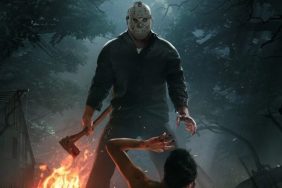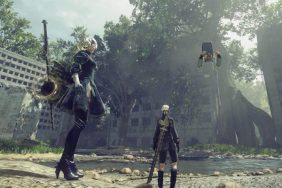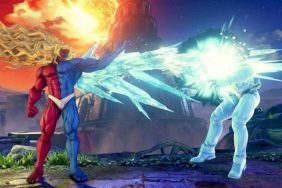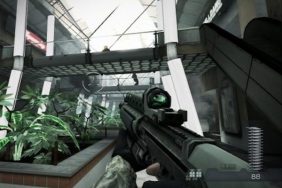Warning: There are spoilers ahead for a level 20 mission in The Division.
As previously noted, The Division has well and truly sunk its teeth into me since its release, with no other game having managed to wriggle its way into my PS4 since I first got my hands on it. There are a number of factors that have have led to it maintaining my interest, from its rewarding progression system through to its immersive and atmospheric world, though its story takes a notable backseat to its action throughout its duration.
With there being a very limited number of memorable characters littered throughout the game, The Division‘s plot is mostly conveyed to the player through collectible audio logs and a select handful of cutscenes, meaning that any interaction the player has with actual distinguishable characters that don’t assume the role of nameless cannon fodder is automatically made more interesting as a result. This means that the player’s hunting down of LaRae Barrett, the leader of the gang of convicted criminals known as the Rikers, makes for one of its more interesting missions due to LaRae’s presence throughout it. However, playing through this mission I couldn’t help but feel that something was a little off, with there being a suggested racial motivation behind her bloodlust that, considering current events, is arguably ill-advised considering how poorly it is handled.
The Rikers are a gang made up of criminals previously confined to Rikers Island, who as a result of an organized prison break now roam the streets of New York in the wake of the deadly Black Friday virus. Their goal is to stamp out the authoritative power of the Joint Task Force, an assembled group of police, firefighters, infantry and medical staff, and establish themselves as the lawless leaders of post-outbreak New York, with them being led in this mission by LaRae Barrett, their ruthless figurehead. The mission in which she appears sees players venturing into the Lexington Event Center, which has been forcefully taken over by the gang, tasking them with rescuing a number of hostages and investigating the Rikers’ activity in the building.
Through a series of ECHO transmissions, the 3D holograms found in the game’s world that offer glimpses of the immediate fallout from the deadly virus, players learn of LaRae’s penchant for violence and her disdain for the police, with her pictured overlooking her grunts as they slaughter members of the JTF. Up until this point I had still not actually encountered LaRae in the game, so had mostly assumed that her complexities as a character were limited to her psychotic violence and venomous hatred for the police, a pretty straight-forward mentality for a criminal antagonist suddenly granted the keys to a city no longer restrained by a governing body. But then my first and lone encounter with LaRae indicated that her behavior and violence amidst the wreckage of NY was racially motivated, and Ubisoft’s portrayal of her suddenly becomes pretty questionable.

The turning point comes prior to players’ showdown with her, when she jumps from out of the rafters of the building and exclaims: “Just one more dead black body on the pile, right? Just nothin’ to you! So blind, all of you!” With this line of dialogue, Ubisoft effectively insinuates that LaRae’s motivations extend beyond her being a criminal trying to forcefully eradicate the police due to her disdain for them as a result of her own indiscretions, and veers wildly into the very real tension surrounding police violence with poor results.
With how vague The Division remains in exploring its plot points throughout its entirety, players are left to put together the pieces of the puzzle surrounding LaRae themselves, and this particular piece strongly suggests that her engaging and condoning brutal murders as leader of the Rikers is, at least in part, revenge for the racial injustice that she feels she has experienced as an African American. The problem is that The Division only briefly touches upon this, throwing in that short line of dialogue before the player kills her, then proceeding to show a video clip of her rallying her gang members with a speech that features her mercilessly stabbing a man, alongside the following dialogue: “They say this disease is a tragedy? They say it’s the end of the world? This disease is our teacher… teaching the uniforms that they done, teaching us to rise up! They’ve taken from us long enough, now we take from them; their houses, their cars, their families, their lives. This is our town. Now is our time.” As far as I’m aware, LaRae represents the only exploration of the racial tension in the US in the game’s entirety, so her being pitched as the lone black voice alluding to the supposed institutionalized racism of the game’s authority figures role is disconcerting given that she’s a morally bankrupt, psychopathic murderer.
Watch a video of the mission below. The relevant parts begin at 0:10 and 3:43:
Without the context of LaRae’s insinuation of racism, this could well be perceived as a criminal encouraging her fellow criminals to overthrow an establishment she holds contempt for due to her time behind bars, but after that line of dialogue her character took an uncomfortable turn in my mind. While it could be that Ubisoft did not think into the comment as much I have here, the point remains that the inclusion of a black character going on a murderous spree as a result of racism, because in my opinion that is certainly what is implied, is disappointing. After all, if that wasn’t Ubisoft’s intention, then why would it be included?
Her comment made it impossible for me to ignore the potential implication that her actions are maybe a result of the racism she believes is exhibited by authority figures such as the police. “Just one more black dead body on the pile, right?” is a comment that is incredibly relevant considering the ongoing debate in reality regarding institutionalized racism in the US, and is especially poignant given the rise of Black Lives Matter in the wake of a number of African American deaths at the hands of police. The problem is that this poignancy is reserved for a character who seems to have responded to this by mercilessly killing anyone in her path, in a game that doesn’t greatly explore any facets of its particularly thin plot. It would have been entirely reasonable – arguably plausible – for the game to explore racial tensions, but slapping them solely on one black character and then having her be the biggest psychopath in the entire game is a questionable move.
LaRae’s racially charged remark needn’t have been said if the game wasn’t going to explore this topic any further, with her story arch concluding with the suggestion that her immoral actions may be a result of racial discrimination before the player is tasked with killing her, followed by a video of her calling upon her followers to overthrow her perceived oppressors. Regardless of whether Ubisoft intended these comparisons to be drawn, if they introduced dialogue into the game that effectively blurred the lines between reality and fiction regarding a contentious topic that is so prevalent in the US right now, it would have served the game much better for them to do it with a lot more nuance. If Ubisoft really wanted to touch upon racial tensions in the US with its game, it would have perhaps been more appropriate to not have one side of that issue solely represented by a serial-killer black criminal.








